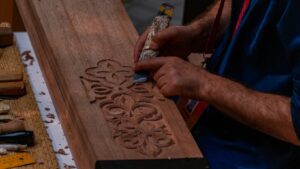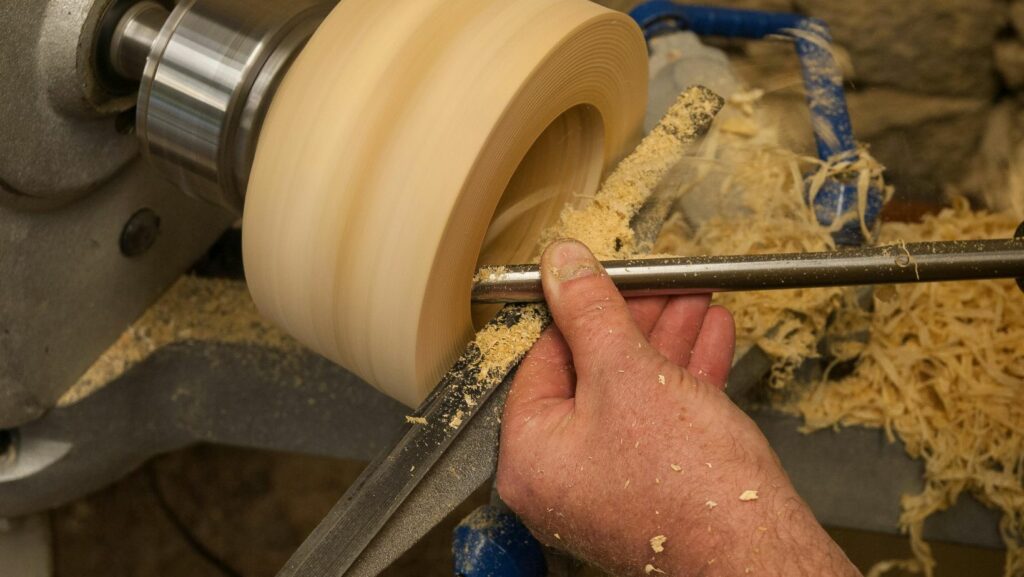V Tool Wood Carving
 Wood carving, an age-old craft, has seen a resurgence in recent years as more people seek creative outlets. Among the essential tools for any woodcarver, the V tool stands out for its versatility and precision. Whether you’re a beginner or a seasoned artisan, mastering the V tool can elevate your wood carving projects to new heights.
Wood carving, an age-old craft, has seen a resurgence in recent years as more people seek creative outlets. Among the essential tools for any woodcarver, the V tool stands out for its versatility and precision. Whether you’re a beginner or a seasoned artisan, mastering the V tool can elevate your wood carving projects to new heights.
The V tool’s unique design allows for intricate detailing and clean cuts, making it indispensable for tasks like outlining, texturing, and creating sharp angles. Its ability to carve both soft and hardwoods with ease makes it a favorite among carvers who crave both functionality and finesse. Ready to dive deeper into the world of V tool wood carving? Let’s explore its uses, techniques, and tips to help you make the most out of this remarkable tool.
What Is V Tool Wood Carving?
V tool wood carving involves using a specialized chisel with a V-shaped cutting edge to create detailed patterns and textures on wood surfaces. The V tool, characterized by its 45 to 90-degree angle, allows woodcarvers to produce sharp lines and deep grooves essential for intricate designs.
The V tool is indispensable for many woodcarving tasks. Carvers use it to outline designs and create fine details that enhance the overall artistry of their work. Whether crafting intricate borders, adding texture to backgrounds, or carving letters, the V tool’s precision helps achieve clean, consistent results.
In addition to versatility, the V tool offers ease of control. Carvers can manage the depth and angle of cuts with accuracy, making it suitable for both soft and hardwoods. This tool’s adaptability makes it a favorite among both novice and seasoned woodcarvers.
Understanding the properties of the wood being worked on can enhance the efficiency of V tool wood carving. Different woods carve differently, and the V tool’s effectiveness can be maximized with the right techniques tailored to each wood type.
Key Features Of V Tools
V tools are essential in wood carving, revered for their precise cutting capabilities and versatility. Key features distinguish them.
Blade Material
The quality of the blade material impacts the tool’s performance. High-carbon steel blades retain sharpness longer, crucial for detailed work. Stainless steel offers corrosion resistance, suitable for humid environments. Laminated steel combines durability and sharpness.
Handle Design
A well-designed handle enhances control and reduces fatigue. Ergonomic handles fit comfortably, allowing prolonged use. Wooden handles provide a traditional feel and balance, while composite materials offer durability and slip resistance.
Cutting Angle
The cutting angle affects the tool’s ability to make clean cuts. Typically, V tool blades have a 60-degree angle, ideal for most detailing work. Adjusting the angle enables more aggressive cuts or finer details when necessary.
Selecting The Right V Tool For Your Needs
Choosing the right V tool impacts the quality and ease of your wood carving projects. Here are some considerations for both beginners and experienced carvers, as well as the types of wood they may work with.
Beginner vs. Experienced Carvers
Beginner carvers benefit from V tools with smaller blades and ergonomic handles. These features offer better control and less fatigue. Smaller blades, typically between 1/8 inch and 1/4 inch, allow beginners to manage cuts more easily and accurately. For instance,  Flexcut’s KN15 model is popular among novices for its balance and control.
Flexcut’s KN15 model is popular among novices for its balance and control.
Experienced carvers might prefer V tools with larger blades, which enable faster material removal. They often opt for specialty tools, such as the Pfeil Swiss-made V tools, which provide precision for intricate work. Larger blades, ranging from 1/4 inch to 1/2 inch, prove efficient for more complex patterns and deeper grooves. Advanced users also benefit from interchangeable blade systems, giving them flexibility in their projects.
The V tool stands out as an indispensable asset in the realm of wood carving. Its precision and versatility make it suitable for both novices and seasoned carvers alike. From creating intricate details to managing deep grooves, the V tool’s capabilities are unmatched.
Selecting the right V tool, understanding its features, and mastering various techniques can significantly enhance carving experiences. Additionally, proper maintenance ensures the tool remains effective for years.

